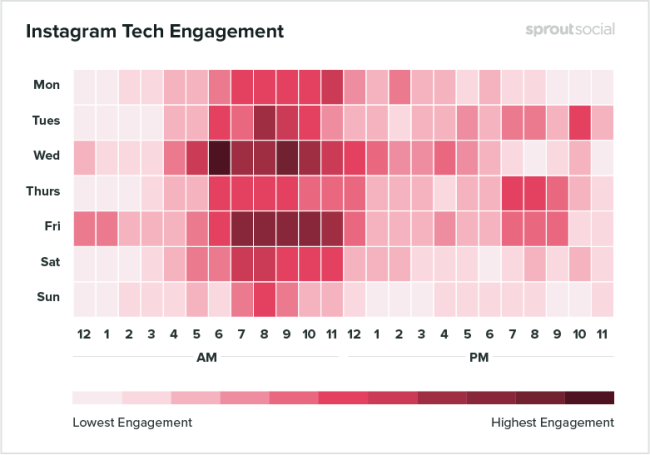
You need a strategy to achieve your goals if you want to use content marketing to grow your company. It is important to set goals for your content marketing and define KPIs. These steps will help you determine who you want to reach, how to deliver your content, and how to measure success. Once you have these steps you can plan the steps you need to take to get there.
How to create a content marketing plan
The key to content marketing success is creating an editorial calendar and regularly scheduling content. It involves planning the types of content that you want to share, identifying your audience and writing each piece of content well. Consistency is another key component of a successful marketing strategy. You will be able to produce new content on a consistent basis if you have enough content. It is important to take into account your audience's stage and life, as well the various devices they use to consume the content.
Setting SMART goals
Setting SMART goals is crucial when planning your content marketing strategy. As a rule, your SMART goals must be specific, measurable. Realistic, achievable and time-bound. This framework will help you track your progress and measure your success. It's important to make goals that are attainable and challenge people. It's also important to make them time-bound to help you stay on track.

Defining KPIs
Metrics are a key part of any content marketing strategy. Page views are a simple metric that you can use to track your progress. You can also segment traffic by channel to determine which channel is driving the most traffic. You can then see where your efforts have been successful. But it is not enough to know the number of page views; you also need to consider other metrics, like conversion rates, to fully understand the effectiveness of your content marketing.
Create a content calendar
A content calendar is vital for creating high-quality, consistent content. It will allow you to identify the top topics and trends. You can use it to plan how you will publish your content across multiple channels. A content calendar will help you organize your content production more effectively. It can also help you identify gaps in your content marketing strategy and alert you to great copy in advance. It's a great way for you to keep track of your content outputs and identify collaboration opportunities.
Attracting audience members
An effective content marketing strategy will help you attract audience members to your website and ultimately boost your sales. There are many types of content marketing. These include articles, videos, and photos. The strategy defines which of these forms of content will be most beneficial for your business and which ones won't. You can also define your content distribution channels and goals. Your content must be relevant to your audience in order to attract them. Below are some benefits of content-marketing.

FAQ
What are the seven steps of content marketing
The seven-step process to content marketing is:
-
Identify the problem
-
Learn what is working right now
-
Make new ideas
-
Turn them into strategies
-
Try them
-
Take measurements
-
Keep going with the same process until something works.
This approach has been proven to work well for businesses large and small.
What role does a content strategist play?
Content strategists are able to help you understand what search terms people use on the internet. They optimize your site for search engines and help you rank well. They also write content for social media websites like Facebook or Twitter. They also write copy to advertise, blog, or website.
A content strategist works closely alongside a marketing department and helps to plan a cohesive strategy for the company's web presence. Content strategists may work on their own but often work in collaboration with the rest to ensure that each piece serves its purpose.
How does content marketing work?
When someone visits your site, they're looking for something specific. It's great if they find exactly what they want. They'll go elsewhere if they don't find what they need. Content marketing helps you provide useful and valuable information that answers questions and solves problems. You can use this content across all platforms (social media, email, etc.) It will be available to everyone at all times.
How can I measure success with content marketing?
There are many different ways to evaluate the effectiveness your content marketing strategy.
Google Analytics is one of the best measurement tools. Google Analytics allows you to see the origins of your targeted traffic and which pages they most often visit.
It also shows you how long each visitor stays at your site before they leave.
This data can be used to improve content to attract people's interest and keep them engaged for longer durations.
You can also use these questions to gauge the success of content marketing efforts.
Is my email newsletter providing any value to my subscribers? How much of my entire mailing lists have become paid members? How many people have clicked on my landing page to convert? Does clicking through result in higher conversion rates?
These are all important metrics to track and monitor over time.
Another great way to measure success in content marketing is to track the number of people sharing your content on social media.
Start now if you don't already. It could be the difference between being visible and being ignored in your industry.
Which Content Marketing Platform is Best?
There are many platforms on the market today. Each platform has its own pros and cons. Here are some top choices:
-
WordPress - It's easy to setup and maintain. Amazing community.
-
Wix – Setup and maintenance is much easier than WordPress You don't need any technical knowledge.
-
Squarespace is the best choice for those already having a site.
-
Blogger - A free blogging service.
-
Medium - A place where writers can share their work.
-
Instagram - An image-based social media platform.
-
LinkedIn – A networking tool.
-
Facebook – A social network.
-
YouTube - Video sharing platform.
-
Pinterest - Image-based platform.
-
Google Analytics – Track visitor behavior.
-
Hubspot: Email marketing software.
-
MailChimp, Email marketing software.
How many hours per week should I spend on content marketing?
It depends on the situation. You might not have to spend much time on content marketing. If you are trying to attract traffic to your site, however, you may need to invest at least 1 hour each day.
Statistics
- Out of the 1,500 marketers we surveyed for our State of Content Marketing report, 78% who felt their content marketing strategy was exceptionally effective in 2021 had documented their strategy. (semrush.com)
- Measure your goals with a progress indicator of 0-100%. Make your goals collaborative and transparent (semrush.com)
- We found that 40% of businesses don't have a documented strategy yet. (semrush.com)
- Companies that use content marketing see approximately 30% higher growth rates than businesses not using it. (mailchimp.com)
- Content marketing produces 3X more leads per dollar spent. Content marketing costs 62% less than traditional marketing. (criteo.com)
- According to research compiled by Coschedule: Companies that publish 16+ blog posts a month get as much as 3.5x as much traffic as those that publish 0-4 posts a month. (criteo.com)
- Seventy-two percent business to business (B2B) (mailchimp.com)
- According to the Content Marketing Institute, 70% of B2B marketers and 86% of B2C marketers surveyed use content marketing in some form or other. (criteo.com)
External Links
How To
How can you create a content marketing strategy for your business?
The first step is understanding what kind of content you want to create for your clients. Once you have this information, you can start creating content. This could mean creating an editorial calendar and planning the source of these content. Content should always serve a purpose. It doesn’t matter whether you’re writing blog posts, social media updates or e-books; they all need to serve one purpose.
After you have decided what type of content you want, it is important to identify your target market. So who are they interested in, and why would they care about whatever you're offering them?
Next, you need to identify your target market. Then, find ways to communicate with them. However, social media platforms are a fantastic way to get in touch with people. There are also other options like videos, podcasts or webinars.
After you have determined how you will communicate to your market, the next step in your content creation process is to choose what topics and types of information you want. This again goes back to the reason you're writing content. What problem does it solve? Is it useful? Is it going to make their lives easier?
Now that you know what kind of content you write, it's time to figure out what you want to say. What do you want? On current events? On specific products and services? Your focus will be determined by the answer to this question.
After you've answered these questions, it's now time to combine all the pieces into one complete package.
Every piece of content should be used for its intended purpose. It is important to not waste time or energy. Therefore, you should ensure that every piece of content you create has quality.
You must remember that a content marketing strategy of great quality has many parts.